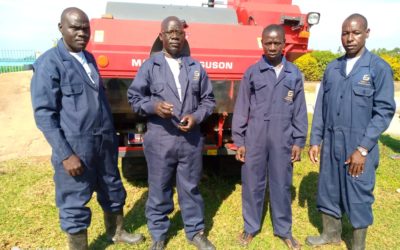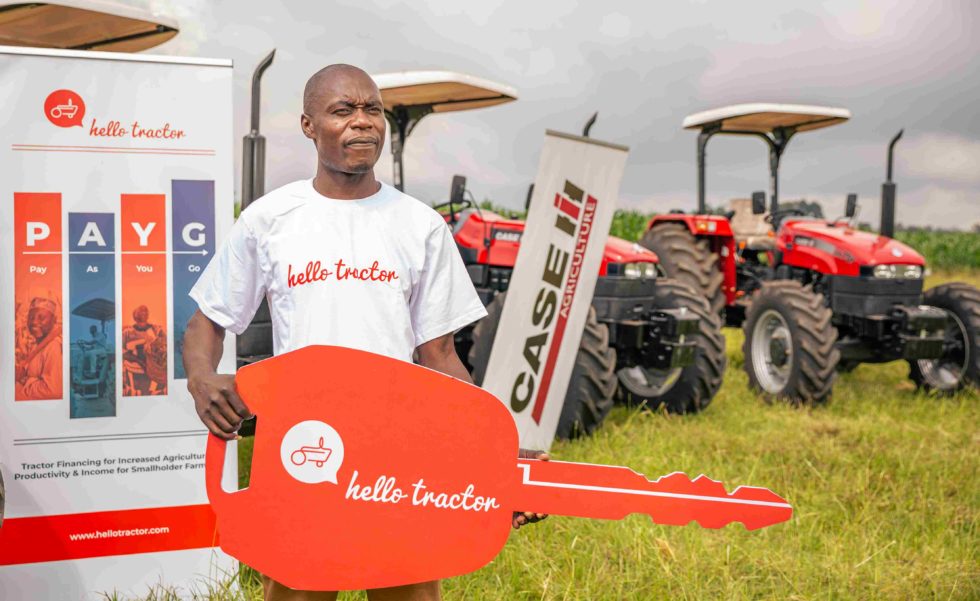Conservation Agriculture
Learn more about conservation agriculture and how smallholder farmers
across the developing world are mechanizing through innovation.
Knowledge Sharing Platform
Welcome to our Conservation Agriculture Page, where we delve into the transformative power of sustainable farming practices. Our focus is on methods that prioritize soil health, promote biodiversity conservation, and uphold environmental sustainability. By emphasizing these principles, we aim to foster a resilient agricultural ecosystem that not only sustains crop yields but also supports long-term environmental health and community well-being. Join us as we explore innovative approaches and impactful initiatives driving positive change in agriculture today.
Resource Partners
Hello Tractor has partnered with FACASI (a CIMMYT-led and ACIAR-funded initiative) to bring you relevant and up to date information on small farm mechanization, conservation agriculture, and smart business models to ensure maximum smallholder impact. This site is your resource guide to all things related to sustainable smallholder mechanization.

Did You Know?
Smarter Mechanization
The two-wheel tractor is the world’s first multipurpose tractor designed for rugged small plots of land. It comes with attachments for land prep, irrigation, harvest, and transport, keeping the machine active throughout the year. With technology and new business models, this machine has the potential to radically change smallholder systems.
Free Agricultural Reports
Learn more about conservation agriculture and how smallholder farmers across the
developing world are mechanizing through innovation.
Report 1
Spatial targeting of national level investments in farm mechanization: An example for Zimbabwe
Report 2
Harnessing Appropriate-scale Farm Mechanization in Zimbabwe (HAFIZ) Project 1
Report 3
Understanding customer types for appropriate-scale machinery in Zimbabwe Report
Report 4
Harnessing Appropriate-scale Farm Mechanization in Zimbabwe (HAFIZ) Project 2
Report 5
Impacts of appropriate-scale farm mechanization on rural livelihoods in Zimbabwe: A quantile approach program
Report 6
Harnessing Appropriate-scale Farm Mechanization in Zimbabwe (HAFIZ) – First Roundtable Meeting
Report
Report 7
Harnessing Appropriate-scale Farm Mechanization in Zimbabwe (HAFIZ) – Second Roundtable Meeting Report
Report 8
Harnessing Appropriate-scale Farm Mechanization in Zimbabwe (HAFIZ)
– Third Roundtable Meeting Report
Report 9
Understanding customer types for
appropriate-scale machinery
Report 10
Need Assessment Results – Product: Mechanized Basin Digger for Pfumvudza
Report 11
Need Assessment Results – Product: Mechanized Bed Planter
Report 12
Notes from the expert interviews conducted for Activity 1.1
Report 13
Proposed threshold and ranking for selected drivers of mechanization for Activity 1.1
Report 14
Spatial predictions of different pieces of mechanization equipment available in Zimbabwe.
Report 15
Harnessing Appropriate-scale Farm Mechanization in Zimbabwe (HAFIZ) Project
Report 16
Harnessing Appropriate-scale Farm mechanization In Zimbabwe (HAFIZ) – South Africa
Report 17
Overview of spatial layers for ex-ante targeting in Activity 1.3
Report 18
Report on Qualitative Drivers and Impacts of Adoption of Appropriate-scale Farm Machinery in Zimbabwe
Report 19
Perceptions of Business Operators and End-Users, Women, Youth and Other Vulnerable Groups
Report 20
BASIN DIGGER TESTING PROTOCOL/RESULTS
Report 21
Harnessing appropriate scale farm mechanization for smallholder farmers in South Africa.
Final Draft
Harnessing Appropriate-scale Farm mechanization In Zimbabwe (HAFIZ) – Final Draft
Final Report
Harnessing Appropriate-scale Farm mechanisation In Zimbabwe (HAFIZ) – Final Report
Final Report Comments
Harnessing Appropriate-scale Farm mechanisation In Zimbabwe (HAFIZ) – Final Report- Eric comments
Read Our Blogs With Latest Agricultural News
Learn more about conservation agriculture and how smallholder farmers across the
developing world are mechanizing through innovation.

Mar 16, 2023
Revolutionizing African Agriculture: The Hello Tractor x Heifer International Partnership

Feb 19, 2023
The Power of Proximity: Unlocking Africa’s Agricultural Potential via Community Tech Hubs

Nov 2, 2023
Go Africa Partners with Hello Tractor to Digitalize the Agricultural Production in Kenya

Dec 9, 2021
Introducing: Inclusive Financing for Tractor Ownership Among African Youth & Women

Nov 16, 2021
Four Tips to Reach More Farmers & Increase Your Yearly Income as a Tractor Owner

Oct 25, 2021
Five Hello Tractor Mobile Application Features That Make a Fleet Owner’s Life Easier

Feb 19, 2023
Launching of Hello Tractor’s Mechanization Hub in Nassarawa State, Nigeria

Jan 13, 2023
Bolstering Food Security in Africa Through Accessible Mechanization: Celebrating PAYG

Feb 25, 2023
Activating Agricultural Ecosystems: The Critical Role of Partnerships in Organizations

Aug 27, 2021
Hello Tractor Wins Agtech IoT Platform of the Year at the 2021 Agtech Breakthrough Awards

Aug 13, 2021
How Africa Agribusiness Services (AAS) increased their revenues and impact by partnering with Hello Tractor

Jun 1, 2021
Hello Tractor receives Mercy Corps AgriFin ALE 2021 Awards for Farmer Impact & Last Mile Service Delivery

May 20, 2021
Introducing: Hello Tractor Route Optimization Tool – Increase Tractor Profits & Farmer Reach via Planned Routes

Apr 27, 2021
Press Release: Hello Tractor designs an underwriting credit matrix for PAYG business

Aug 25, 2020
Tackling Food Insecurity by Investing in Tractor Financing and Last Mile Digitization

Jul 16, 2020
New Technologies in Agriculture: The Future of Productive Farming and Efficient Contractor Businesses

Jul 28, 2020
Introducing the Hello Tractor Partners Program

Jan 27, 2021
Hello Tractor Interview with BBC – Audio

Oct 15, 2021
Hello Tractor makes Fortune’s 2021 Change the World List

Jun 3, 2024
Hello Tractor turns 10
Gallery
See videos from the field with informative clips and tutorials from our valued partners!
- Small-scale mechanization using two-wheel tractors
- Supporting smallholder farmers in Zimbabwe with Smart mechanization
- Maize production in Kenya Using Conservation Agriculture
- Introducing a Revolutionary Approach to Mechanization in Tanzania
- Preserving and Enhancing Soil Health in Zimbabwe
- Fostering Sustainable Farming Practices Through Conservation Agriculture